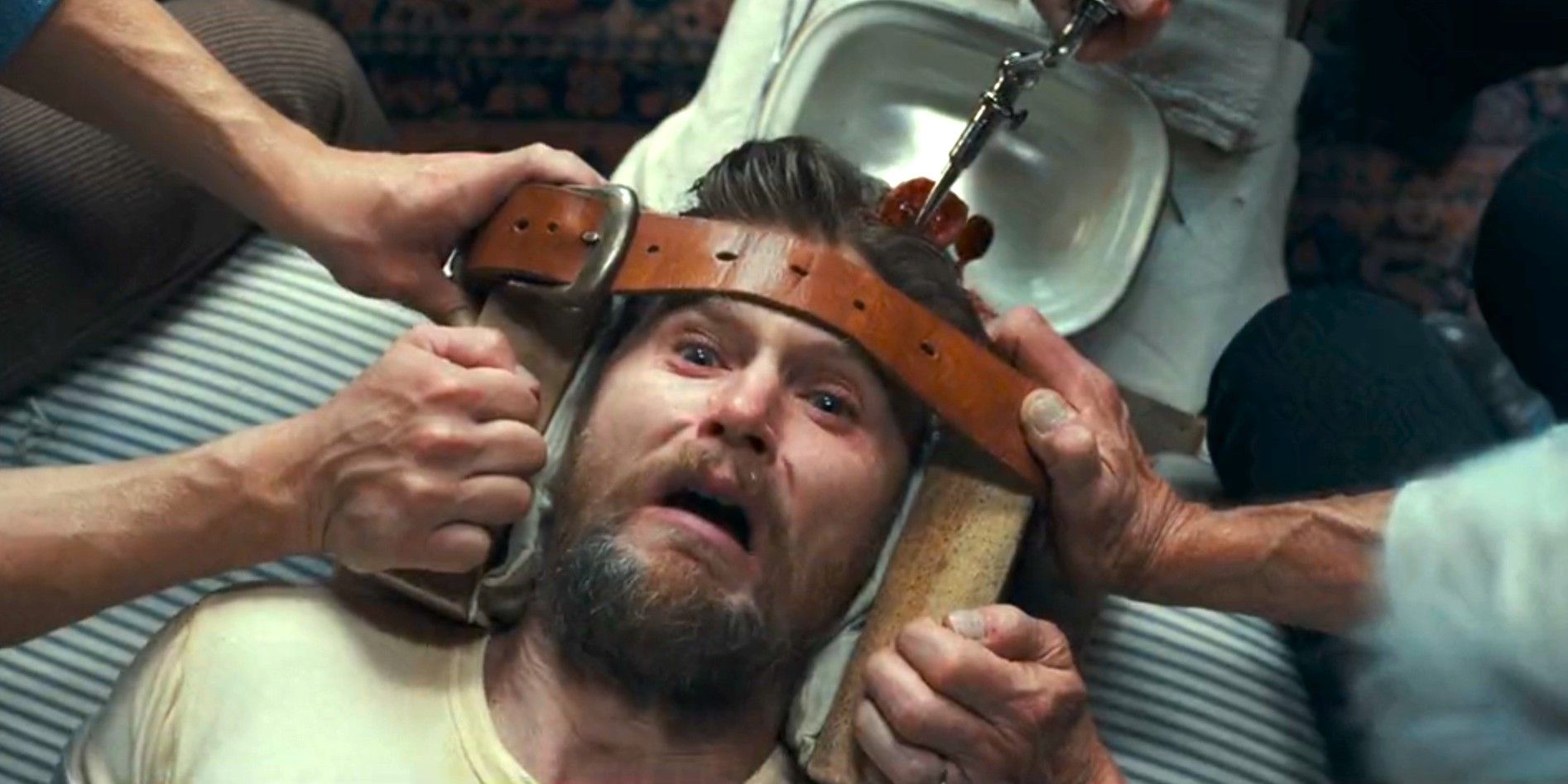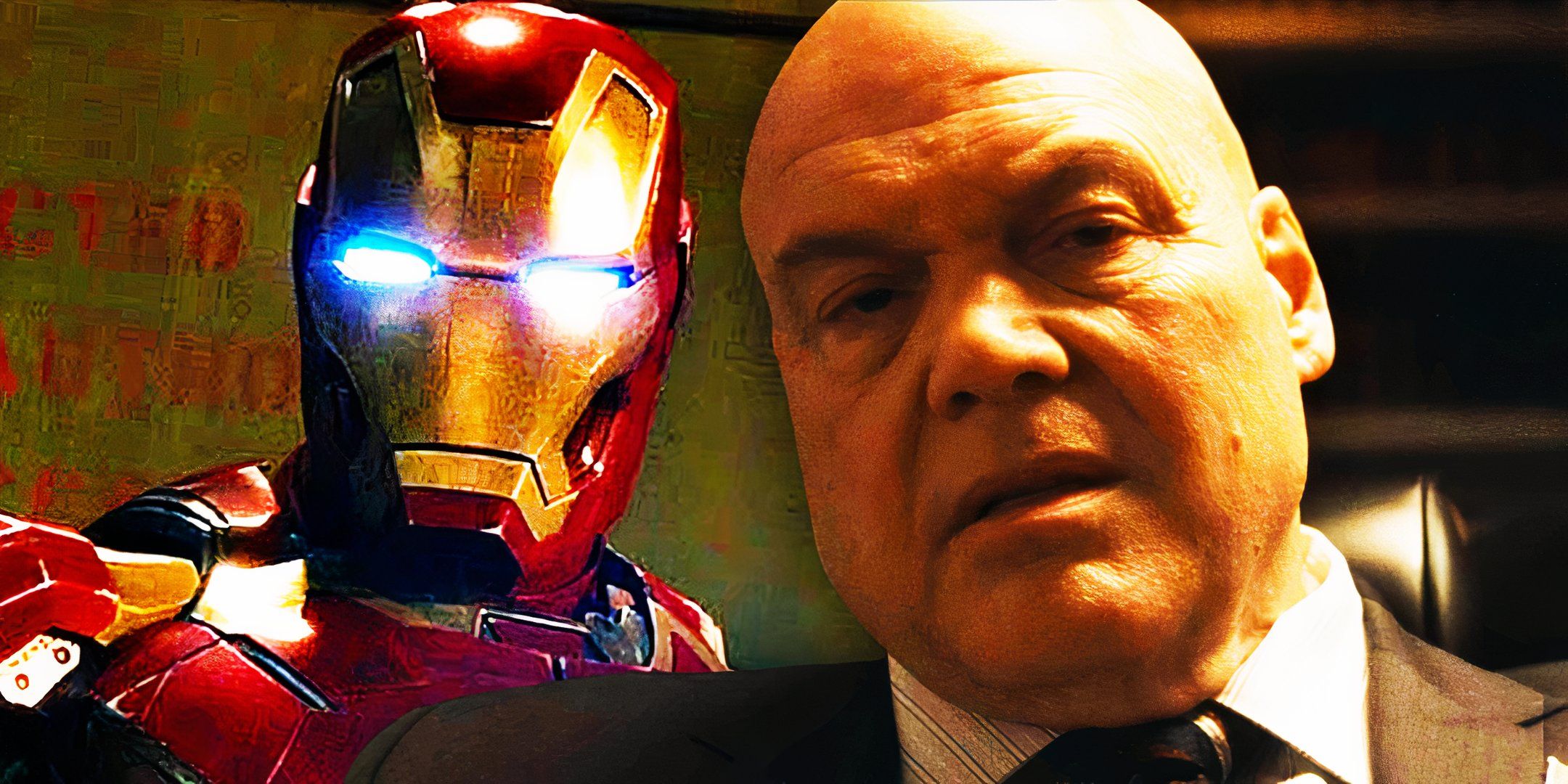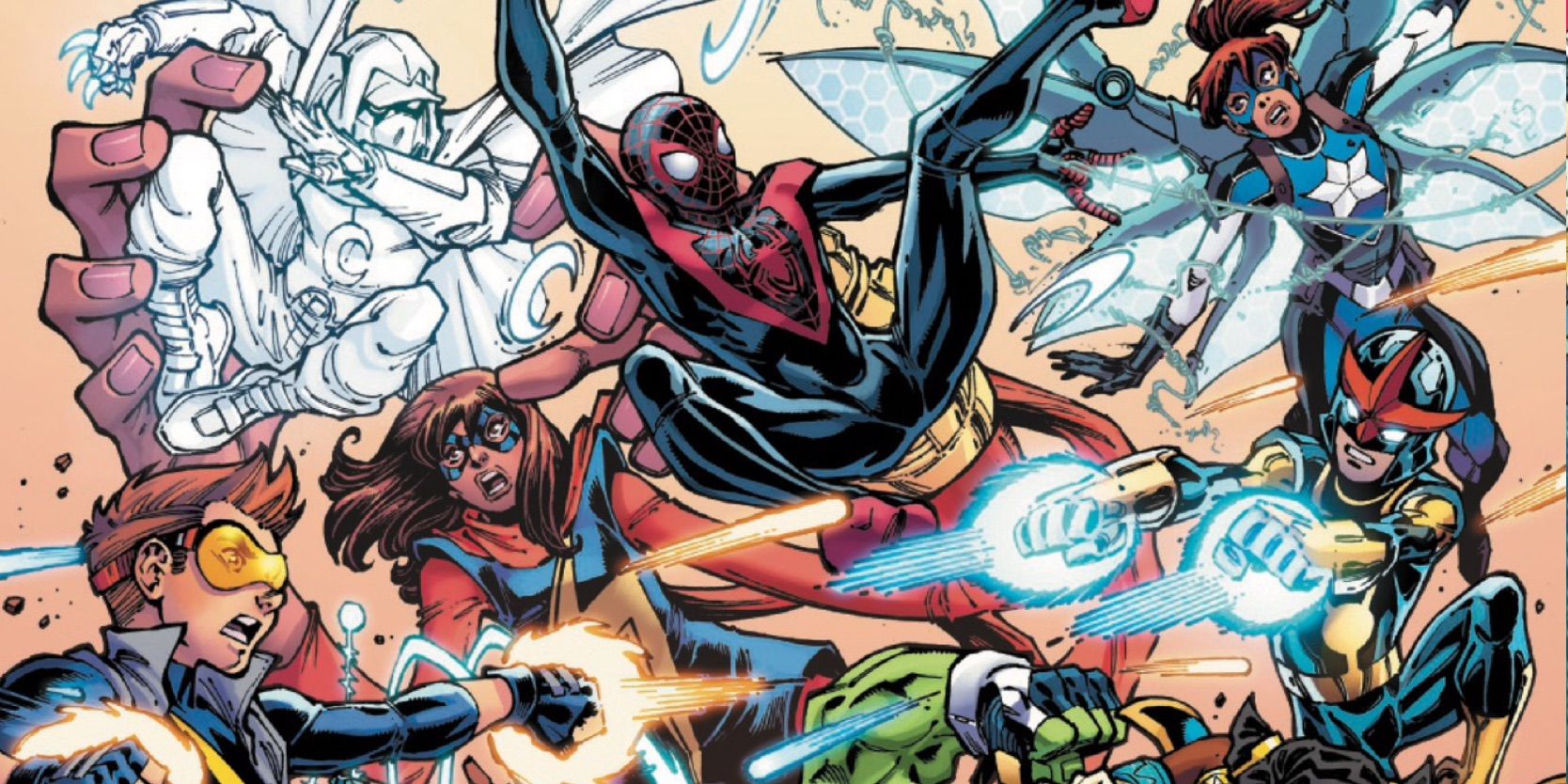Serenity's Wild Twist Ending Explained
Summary Baker Dill is just a character in a fishing video game created by his son Patrick, leading to a surprising twist at the end.
Serenity's ending suggests acceptance and new beginnings, with symbolic colors indicating different outcomes for the characters.
The movie explores simulation theory, raising questions about reality being controlled by a higher power or technological God like Patrick.
The Serenity movie explained that nothing was as it seemed, and it concluded with a twist ending unlike almost any other. Steven Knight’s critically-panned film appeared to be a traditional thriller but a final act twist disrupts the narrative structure. Serenity begins with a close-up of the eyes of a young boy, and from there, the focus immediately shifts to Matthew McConaughey’s Baker Dill, a fishing guide. When Baker's ex-wife Karen (Anne Hathaway) shows up, she makes an offer that he can’t quite refuse.
She wants Baker to kill her abusive husband Frank (Jason Clarke) during a scheduled fishing clip. Baker is more interested in being a good father to his son, and speaking with him through seemingly telepathic means. Given Serenity’s noir elements, the narrative suggests Baker's free will ultimately determines the outcome. However, the major twist is that Baker is being controlled by somebody else and that Plymouth Island is a computer simulation. In this world, Serenity isn’t just a boat, and Justice isn’t merely a fish.
Related Where Was Serenity (2019) Filmed: All Locations Serenity is a 2019 erotic noir thriller starring Matthew McConaughey and Anne Hathaway, and here's where the movie was filmed.
Serenity Is About A Fishing Video Game Re-Coded For Revenge
Baker's Son Created The Game Based On Memories Of His Dad
Serenity Release Date January 25, 2019 Cast Matthew McConaughey, Anne Hathaway, Jason Clarke, Diane Lane, Djimon Honsou Rotten Tomatoes Score 21% (Critics) / 30% (Audience)
Throughout Serenity, Baker speaks to his absent son, suggesting there’s a strong bond in place and that they will ultimately be reunited; a surrealistic image of Baker meeting with a boy underwater aligns with his story. Meanwhile, Baker's nemesis Frank speaks about his step-son, and how he likes to play video games, with the film repeatedly cutting away to an adolescent creating code in his room (while adults fight nearby).
Serenity’s wildcard comes in the form of Strong’s mysterious business person, Reid Miller. During a night of heavy rain, he catches up with Baker and reveals a crucial bit of information after drinking some alcohol. His primary goal is to sell Baker a new piece of fishing equipment, but he’s first offering a free trial. When Baker presses Reid about his intentions, he exclaims, “I am the rules.” Ultimately, Baker discovers he’s living in a video game world created by his son Patrick (Rafael Sayegh).
Baker's compulsion for fishing is merely a character trait, a piece of computer code.
The primary objective is being changed. Baker's compulsion for fishing is merely a character trait, a piece of computer code. Patrick decides to drastically change “the rules,” to live out the fantasy of killing his abusive, real-life step-father. In the simulation, the now self-aware protagonist, Baker, is destabilized by the ever-changing code, unaware if he should fish or kill. Once Patrick completes the new code, Baker follows through with the command.
He is, in part, aided by a new character who appears to be a simulated version of the video game creator - Patrick. In Serenity, Baker finds Justice and Frank — the simulated version of Patrick's step-father — takes a final journey towards Justice. But that’s not Serenity's final reveal: Baker's real-life inspiration, Patrick's father, is deceased. He was killed during military service in Iraq. Baker represents an idealized version of what might’ve been.
Patrick Kills His Stepfather For Real At The End Of Serenity
Patrick Stabs The Man With A Knife
For the majority of Serenity, Patrick uses free will in a world of his own creation. To the viewer, he may seem like a powerless kid, one forced to endure the violence taking place in the next room. Like many kids in similar situations, Patrick retreats into his personal "compulsion," thus transferring energy to the simulated version of his dead father. Through Baker, Patrick could watch his mother and father reunite. He may infuse his creative influences to manipulate a customized world.
But as the wiring of Patrick’s brain changes in Serenity, his creative concepts become a dark and twisted fantasy. Giving Baker free will to kill Frank isn’t enough. Instead, Patrick transfers Baker's power back to himself, in the real world, and the game's creator ultimately leaves his computer to find real-life justice. Serenity doesn’t end with Patrick’s real-life freedom, though he does experience salvation in his own mind (more on that later).
Related 10 Movies That Are Only Memorable For Their Twist Endings, According To Reddit Between the real Keyser Soze and Bruce Willis being dead the whole time, Redditors think these movies were only remembered for their plot twist.
The Foreshadowing Of Serenity's Video Game Twist
The Movie Set This Up From The First Scene
From the very beginning, Serenity foreshadows a simulated world. Of course, there’s the opening shot, in which the audience is taken into the mind of a young boy, Patrick. When Baker first appears, however, there’s no indication that what’s being presented on screen isn’t real. Baker appears to be another grumpy fisherman, one who is passionate about his work. In that sense, Baker's introduction is universally relatable, as he fails while doing something he loves; he doesn't land the big catch, Justice.
Baker DIll is the Hero, Duke the Sidekick, Karen the Femme Fatale, Frank the Baddie, and Constance as the Idealized Love Interest.
There's something a little off in Serenity's land scenes. The characters don’t seem to have much depth; they speak in clichés. Also, McConaughey’s character is repeatedly called by his full name, Baker Dill. In retrospect, the noir archetypes make sense because the characters aren't supposed to have much depth; they’re just thinly-veiled versions of genre archetypes: Baker Dill is the Hero, Duke the Sidekick, Karen the Femme Fatale, Frank the Baddie, and Constance as the Idealized Love Interest.
In addition, Karen references "the real world" when speaking about Facebook. At that point, Serenity suggests these characters live in a parallel world, subtle as it may be. While offering $10 million to Baker, Karen acknowledges the reason she’s there: to make an offer her ex-husband can’t refuse. Later, a supporting character tells Baker that he’s just in his own head, and Duke — the loyal friend — reinforces certain rules that Baker must live by.
Related 10 Worst Twist Endings That Ruined Thriller Movies Between a newly released Stepford Wives clone and a whodunnit in the character's head the whole time, these movies were ruined by these twist endings.
In this simulation, Baker does indeed have an Iraq backstory. And during a moment of reflection, he states that he "didn’t really come back." As Serenity progresses, it becomes evident that no one is supposed to die in Patrick’s simulation, which explains the collective character confusion when the creator begins working away on new code, all the while contemplating his own free will.
To complement the dialogue’s foreshadowing, Serenity uses visual motifs to support genre tropes while associating characters with specific colors. Plymouth Island is full of bold reds, greens, whites, and blues; all of which match the design of Patrick’s room. When Baker accepts he is part of a simulation, he asks someone about the island’s exact location in the world. In the subsequent phone call shot, the color scheme is red, white, and blue, matching Patrick’s geographical location, the United States.
What Serenity's Ending Really Means
The Movie Takes On Different Meanings For Different People
In Serenity's ending sequence, the movie pays homage to the film's genre influences while making a bigger statement. When Baker speaks with his son on the phone, this is where Serenity allows for various interpretations, depending on the viewer's personal experiences. On one level, Serenity’s ending appears to suggest that Patrick has accepted his father’s death, which in turn correlates with new beginnings and life itself.
When the two meet on a dock in the final shot, Patrick wears a bold red shirt and Baker now wears a bold blue one. The implications are that Patrick isn’t out of the water, so to speak, he definitely has legal problems (red symbolizes trouble). And for Baker, there’s a sense of clarity, evidenced by a solid shade of blue. Most importantly, the two are together, surrounded by a bright white light.
Justice comes in many forms, and Serenity can mean many things.
Serenity also raises questions about simulation theory, the idea that the world is controlled by a higher power, a technological God. Author Chuck Klosterman addresses this concept in his 2016 book But What If We're Wrong?: Thinking About the Present As If It Were the Past, in which he discusses the idea that life as we know it is merely the creation of a kid like Serenity's Patrick, someone living in the future playing out various simulations and fantasies. Justice comes in many forms, and Serenity can mean many things.
Other Movies With Simulation Endings
The Matrix, The Truman Show, & More
Close
There are several movies where the entire plot is about a computer simulation. The most obvious example is The Matrix. In that movie, it isn't the end that is a simulation, but the start. However, as the franchise rolled on, it made one wonder what was real and what was simulated. There are even hints in The Matrix: Resurrections that even the real world and rebellion were computer simulations to keep the humans occupied with thinking they were freeing themselves while the computers remained in control.
The Truman Show was the perfect example of an entire movie being a simulation.
While not a "computer simulation," The Truman Show was the perfect example of an entire movie being a simulation. In this film, Jim Carrey stars as Truman Burbank, a man who lives an ideal life. However, he soon realizes that something might not be right. He ultimately discovers that his life is fake. He lives in a town where everyone else are actors and his entire life is one of the most-watched TV shows in the world. He is the only one who didn't know he lived in a fantasy world.
Duncan Jones created a movie that set up a simulation to solve a crime. In Source Code, Jake Gyllenhaal plays U.S. Army Captain Colter Steven. He gets onto a train and then, to his horror, realizes there is a bomb. The train explodes and he dies. The only problem is that he wakes up and gets on the train again. Soon, Colt learns he was a soldier who was almost killed, lost most of his body parts, and remains on life support to learn who planted the bomb on the train. Unlike Serenity, when Colt realizes what is going on, he sets out to make a change.











COMMENTS